[232] TRESTLE TABLE Part II (Tabletop)
Posted: lunes, 3 de octubre de 2011 by Superhero!! in
Oh, there is a lot of work to be done at the office (I have a job at the Ministery of Education, remember?). There wasn't time to write any blog entrie in the last two weeks. It's always the same in this time of the year. But I'm back...
.
In previous post I described the construction of the table base. This entry will describe the construction of the table top.
.
Trestle table: TABLE TOP
.
.
.
.
In the previous post I mentioned that I had decided to use lumber from an urban mahogany tree to build a trestle table. I stored that lumber for 13 months so I'd considered it barely dry enough. My friend Rosalino used his chainsaw without any guide, just freehand so I got a rough kind of chunk!!
My first step was to cut a few inches from the ends because I wanted to know wich side is the bark side and wich side is the heart side. -Why this?... "Because you should plane into the points of the cathedrals on the bark side; and plane in the same direction as the cathedrals on the heart side". -More on this later.
.
.
I start the milling proces focusing on getting only one face of each board flat. It doesn't need to be smooth, just aproximately flat. Winding sticks are very usefull for this because they exagerate any warp or high spots on the board's face. You can see in the left picture that I began with a few diagonal passes. Skewing the tool slightly during the cut makes it easier to push and does assist in flattening. I then switch to long grain passes.
Once I get one face flat I pick my boards to a workshop equiped with a 15" wide planer and pay for the service because my own planer only accepts up to 12" wide boards.
.
.
Unfortunately I wasn't able to use these boards on its full wide (around 14") because I found bark and knots on its edges. I decided to trim the boards to 12.5" wide so they can barely pass trough my thicknes planer for a last smoothing pass.
In the picture on the rigth you can see that I feeded my boards with the cathedrals pointing away from the cutterhead because that was the heart-side of the board. That's supposed to be the right way to do it, but these boards had some wild and reversing grain, so I couldn't avoid tearout in few small areas.
.
.
I choosed a design for the table top that include two wide boards and a narrow center piece (mahogany). There are also two thin dividers, and two end trim (ziricote). This array involve 6 butt joints that can be very dificult to keep aligned during the gluing process, so I choosed to do the glue up in 3 stages.
I started by gluing the mahogany centerpiece and the two thin dividers... piece of cake!!
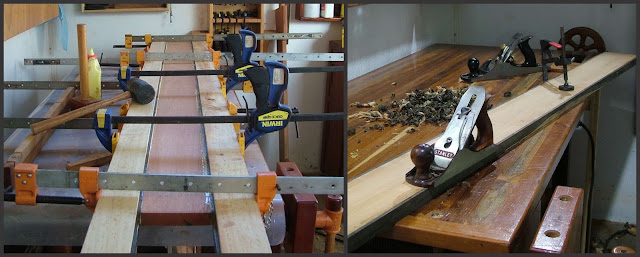
In the left picture you can see a couple 2x4's that I use to spread the clamp pressure more evenly.
..
In the stage two I glue the wide boards and the ziricote end trim together (picture on the left). Working in stages is more time consuming, but there is less stress and higher chances to get every thing right. For the final stage I only had to glue up three big pieces, and only had to keep aligned two butt joints. (picture on the right)
The whole table top is now very heavy and I didn't want any risk of joint failure, so I waited a full day to allow the glue to harden before handling the table top.
.
.
As you can see in the next picture, I leave the pieces long until after the top is glued together. This allowed me to slide them back and forth until the best match is achieved. But now is time to cut it to lenght.
I can't imagine a table saw big enough to handle a table top this size, so I guess even a profesional woodworker has to deal with a jig and a circular saw for trimming the ends of a table top. I hate circular saws because I always had trouble to get a clean and straight cut with them. But I found this jig on the web and I gave it a try. I had a big smile on my face when my cut was done. It's really easy, just lay out the cut, clamp down the jig, pick up your circular saw and make the cut.
.
.
Now is time to work on the Ziricote breadboard ends.
I decided to install breadboard ends to allow seasonal wood movement and keeping the table top flat. The battens are mortised to receive four separate tenons for strenght. Stub tenon ensures alignment of batten and tabletop and keeps the table top from warping.
Ziricote is a hardwood, a very hard one, so cutting a groove in a batten is best done on the tablesaw (pic on the left). For best accuracy I take multiple cuts with a standard blade and then finished the groove on the router table, this way there was minimum material to be removed with the router bit (pic on the center).
While the router table still set up, I cut four mortises on the battens. I raise the router bit only 1/8 in. on each pass and move the batten back and forth keeping it tight against the fence. I drew some reference lines on the fence as a guide to know when to stop (pic on the right).
.
.#1: I set up my plunge router with a guide and a straight bit to remove waste from both sides.
#2: Then I use a hand saw to cut the tenons shoulders.
#3: A coping saw is an easy way to remove the waste between tenons #4: The finished tenons and stub tongue
.
.
The pair of center tenons will be glued and pegged into their mortises, but the only thing holding the batten to the table at the outside tenons are pins, wich I drawbore slightly and drive through elongated holes in the tenons to allow for wood movement.
Please ignore the mess, and keep an eye on the elongated holes and the pins
.
.
.
I know this is a long blog post, but we are almost done...
I have experienced a lot of troubles with wild and reversing grain on these boards, so I preferred to put aside my smoothing plane and turn on my belt sander. Oh boy, I can't find the damn dust colector bag, it's lost and I ended with lots and lots of dust everywhere. (pic on the left)
Next step was to cut a roundover on the edges of the table top, but I wanted a very small radius roundover. Instead of buying a new router bit, I set up my plunge router to use only the concave portion of a moulding bit that I bought when I built the pennsilvanya spice box (pic on the right)
.
.
This is what the table top looks like after finishing.
As usual... Oil based polyhuretane.
I secured the top with screws. Drilled clearance holes throug the braces and reamed them out to allow the top to expand and contract..
.
Then my wife came to watch the finished table and asked me a question:
Then my wife came to watch the finished table and asked me a question:
Are you going to build a set of chairs, too?
.
.
Duh!!!

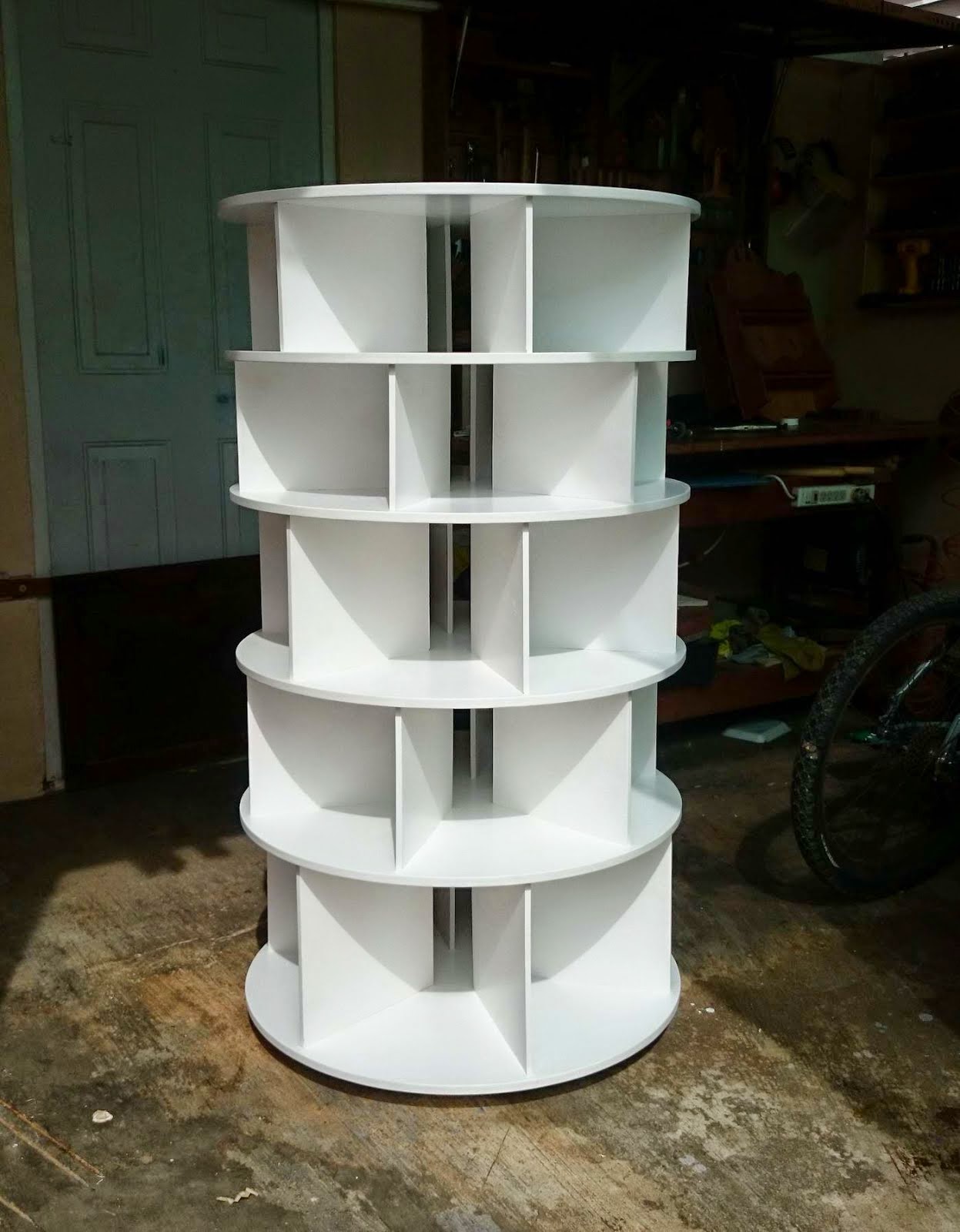
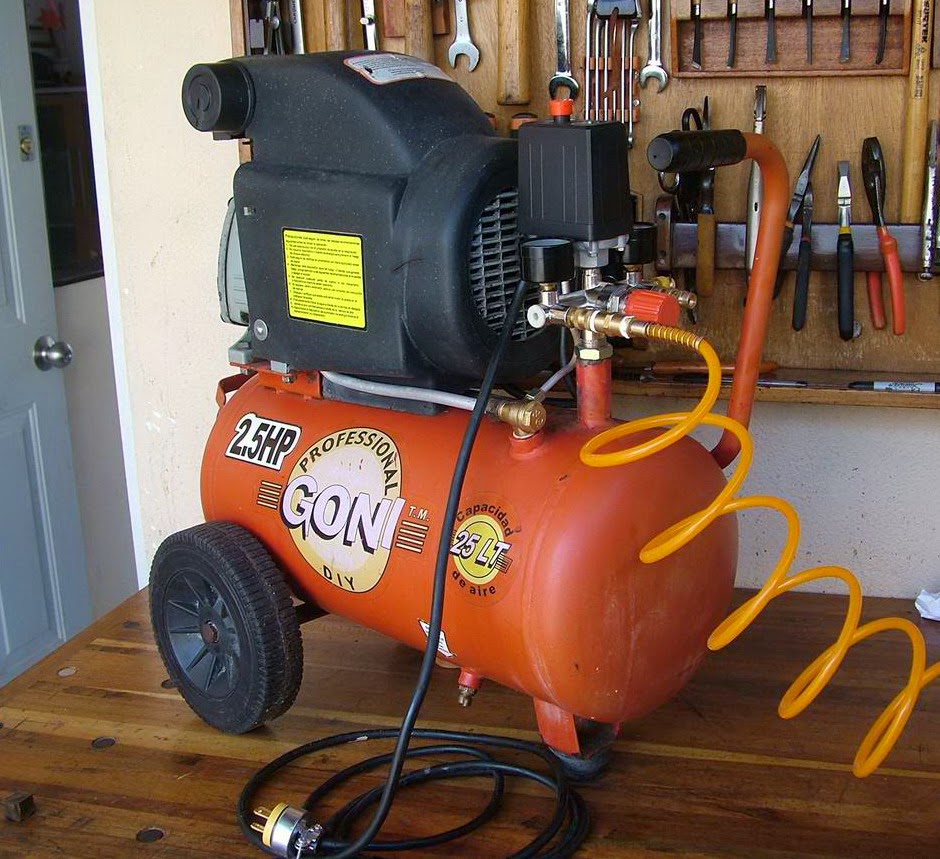
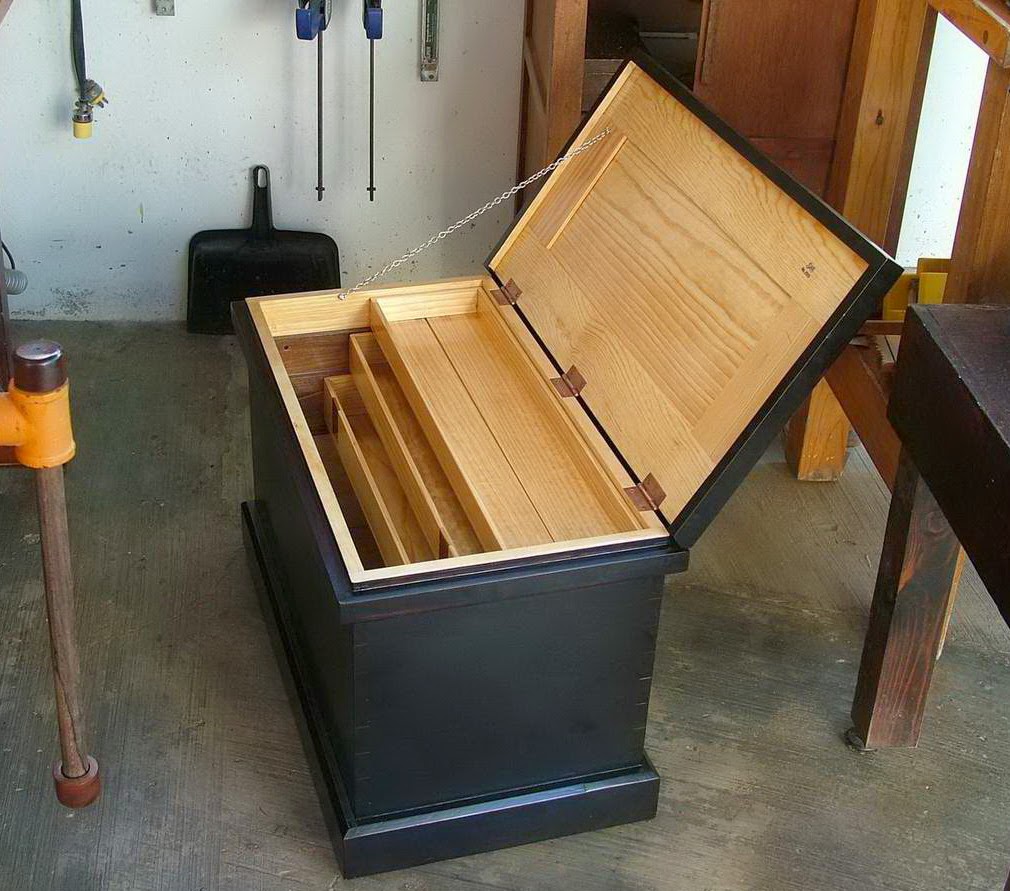

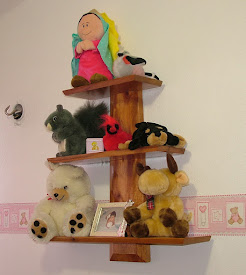
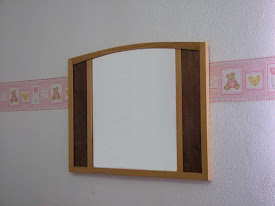


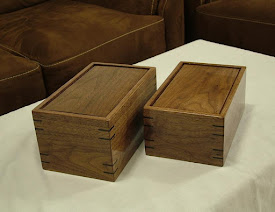
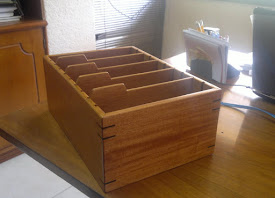

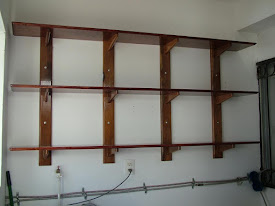
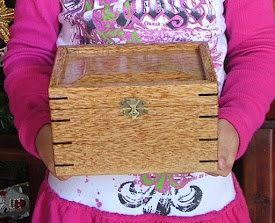

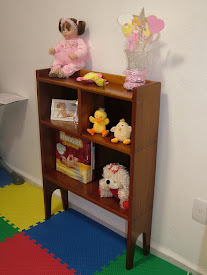
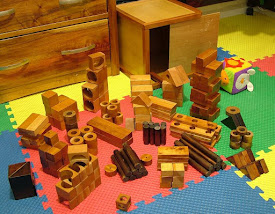
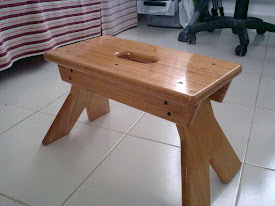

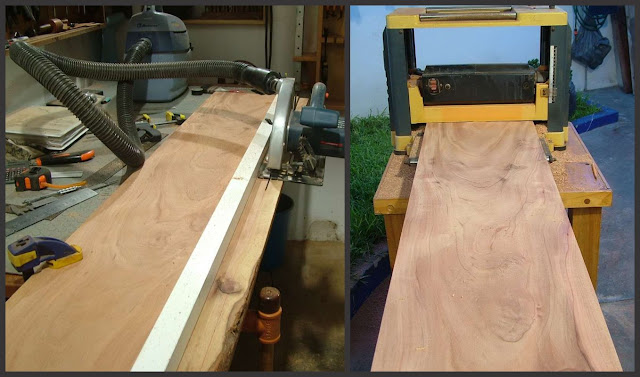



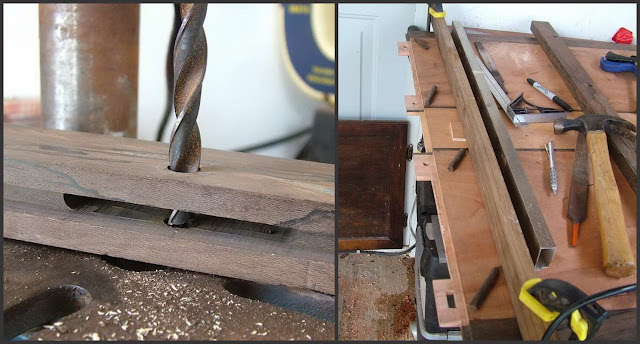
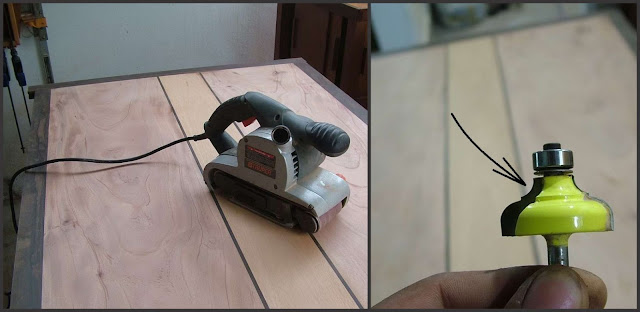
Hola niño que gusto saber de ti, esta padre la mesa, que onda como esta tu nena? Espero que todo vaya bien, bastante tarde pero de todos modos te lo digo, espero te la hayas pasado muy padre en estas fiestas y el mejor de los años. Besos